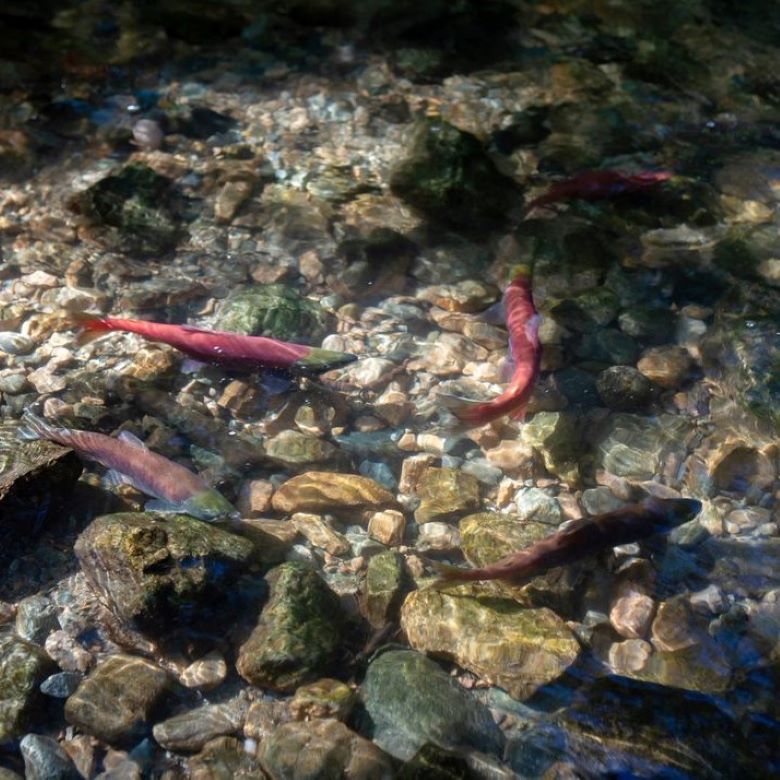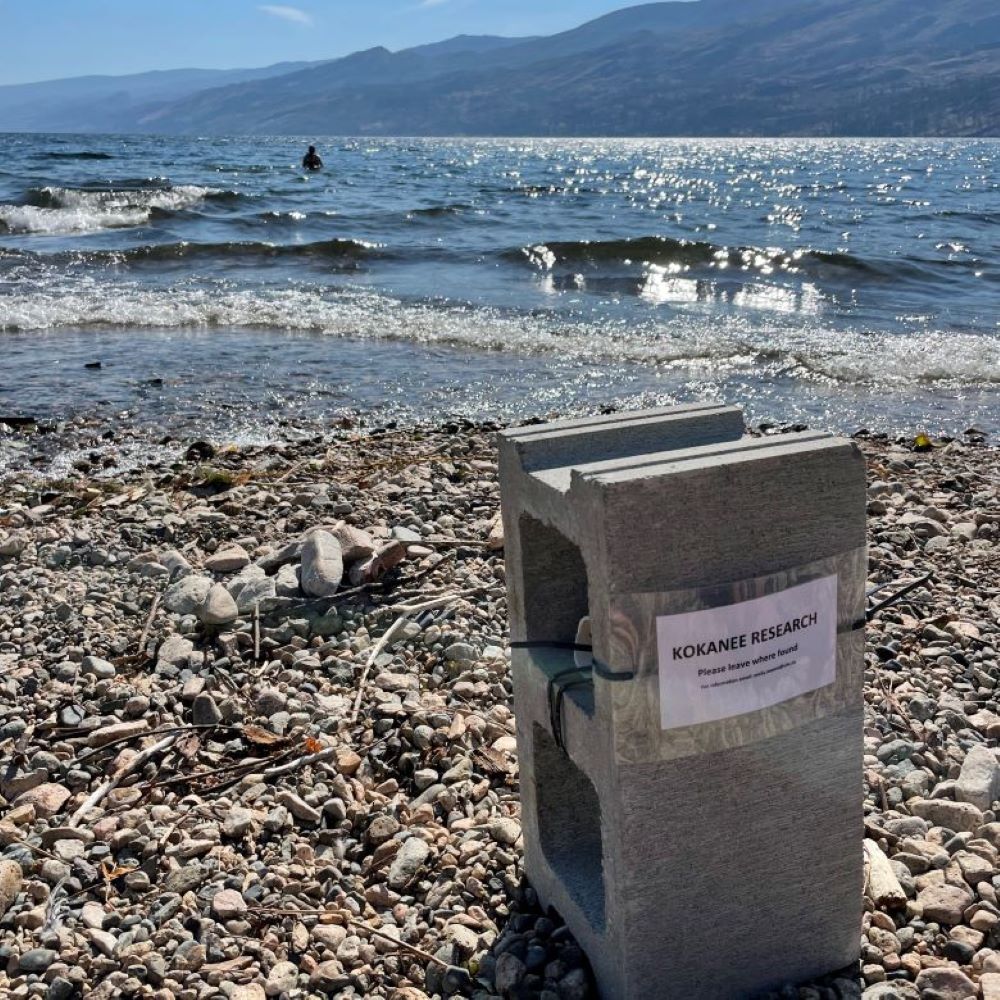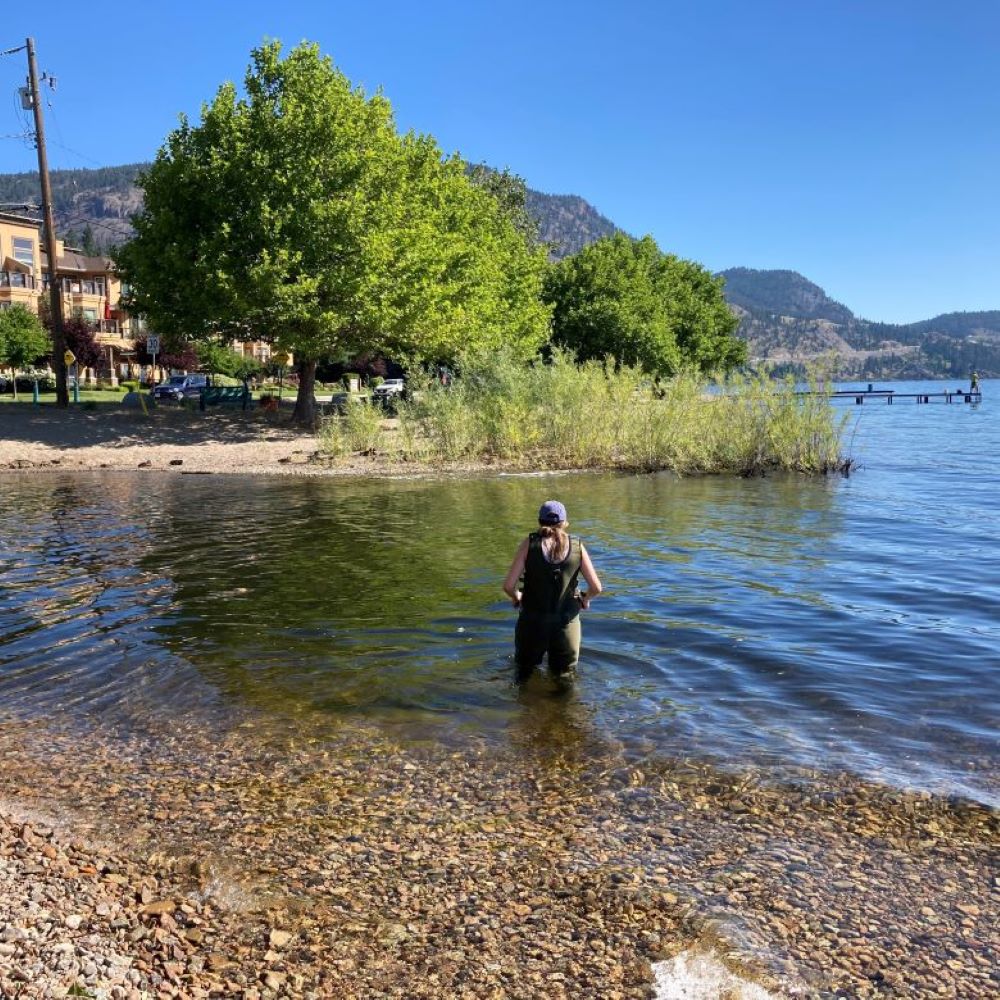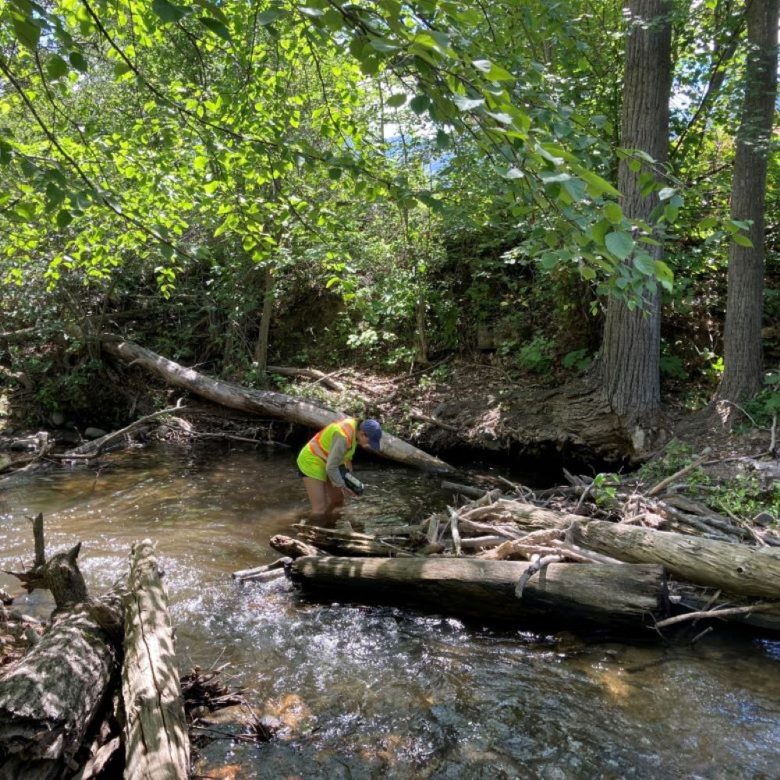Fish
kəkniʔ (kokanee), a species of landlocked sockeye salmon, live in kɬúsx̌nítkʷ (Okanagan Lake) and spawn in the downstream portions of sqʷʔa (Peachland Creek). Spawning success depends on in-stream water quality and quantity, including the timing, volume, and temperature of flowing waters.
Changes to the climate and watershed disturbance, such as wildfires and forest harvesting, can impact these important in-stream habitat characteristics, and may threaten the future existence of kəkniʔ in the region. To ensure future success of the spawning run, we are working to understand the specific impacts of these alterations on the kəkniʔ population.
Our results support research being done at UBC and beyond and will provide scientific evidence to support the development of an integrated governance model for the sqʷʔa watershed.
Our research focuses on kəkniʔ (kokanee). These fish were photographed in sqʷʔa (Peachland Creek) near Hardy Falls.
You may come across one of our temperature probes while exploring the lakes and creeks around Peachland. Please do not touch them.
Cold water is critical to kəkniʔ (kokanee) survival. We monitor water temperatures during the hot summer months to help predict spawning success.
Deep pools in streams are places where the water runs slower and cooler compared to shallow riffle areas. They are safe, comfortable resting places for migrating kəkniʔ (kokanee).






